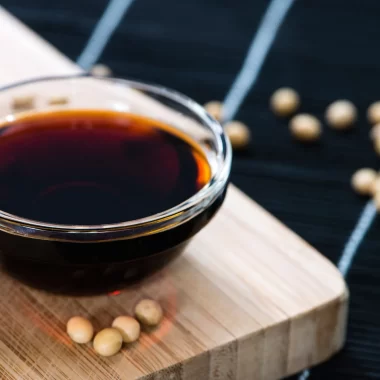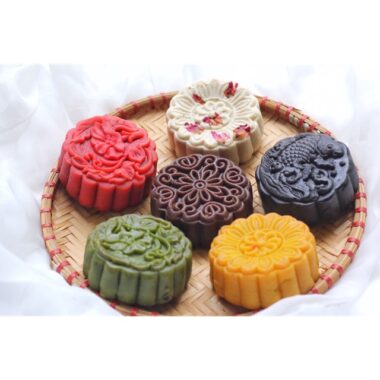Is Vietnamese coffee strong? This is always a topic of interest for numerous individuals who want to try a cup of Vietnamese coffee. Find the answer below with Tasty Touch!
History of Coffee in Vietnam
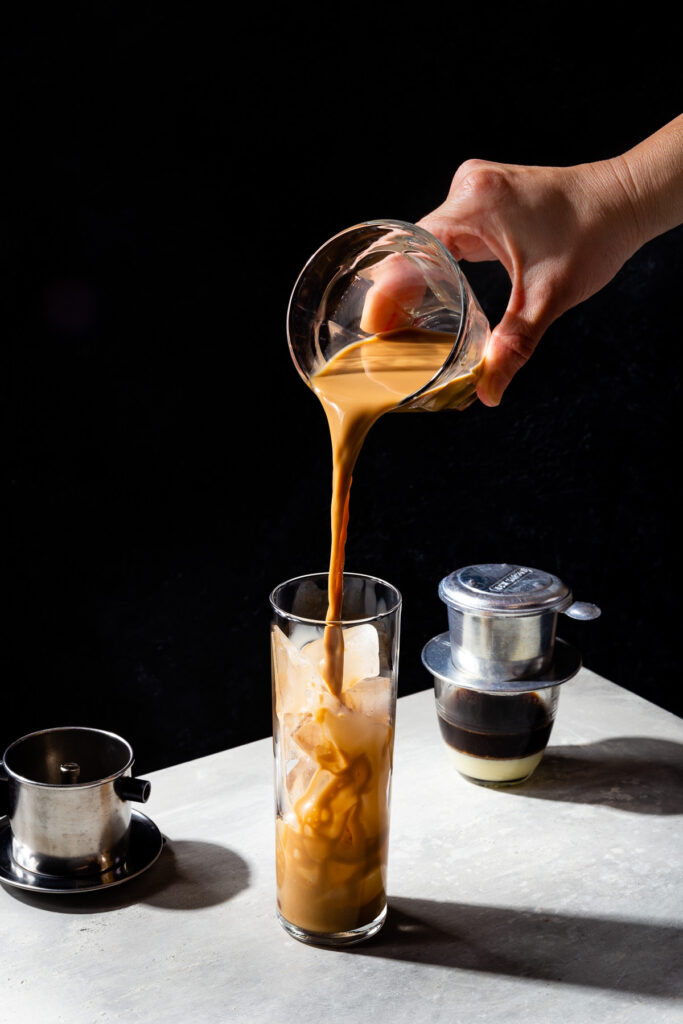
The origin of Arabica coffee appeared first in Vietnam.
In 1857, coffee trees followed missionary priests to Vietnam, first planted in Ha Nam province, Bo Trach province, and Quang Tri province. The first coffee trees (scientific name is Arabica) were grown here. The name coffee is derived from the word “Café” according to (source) in French.
In 1865, the French colonialists invaded Vietnam, and they established many coffee plantations in the northern midlands such as Nhu Xuan, and Son Tay, following the shifting cultivation method (Swimming is a phenomenon where people often change their place of residence). living and farming, nomadic life, mainly ethnic minorities in the territory of Vietnam in particular and in the world in general), and then the highest productivity in the early years was 400 -500kg/ha. Then gradually reduced to only 100-150 kg/ha (the reason is that the soil is not suitable here).
Robusta coffee began to appear in Vietnam.
In 1908, France introduced two new types of coffee into Vietnam, namely Voi coffee (scientific name is C.Robusta) and jackfruit coffee (scientific name C.excelsa Chari) to replace tea coffee (Arabica) low yield, not suitable for the soil in this region.
In 1925, coffee was developed in the Central Highlands (the Vietnamese coffee golden landmark), then it was planted in the Southeast provinces such as Binh Phuoc and spread to Dong Nai.
Robusta coffee beans are the most popular coffee in the world, not only in Vietnam, this type of coffee accounts for 1/3 of coffee production worldwide. In Vietnam, Robusta coffee is especially suitable for the climate and soil of the Central Highlands because this coffee is suitable for rich basaltic red soil, 800-1000m above sea level, so it becomes a type of coffee. has the largest production in the country, accounting for 90% of the output.
Coffee from Vietnam has a robust flavor and a high proportion of caffeine. Over ninety percent of the coffee that is grown and consumed in Vietnam is Robusta, which has a more robust and bitter flavor, with an aftertaste that is reminiscent of peanuts. It is dense, black, and very concentrated.
Unique Vietnamese Coffee-Making Process
The way Vietnamese people roast, brew and enjoy coffee is completely different from other places in the world. Here, the coffee is slowly roasted for about 15 minutes at low heat, while in other countries the coffee is usually machine-roasted.
While the use of coffee machines has become common in the world, Vietnamese people make coffee using filters. With the filter, the coffee will drip slowly to filter out the essence of the coffee, keeping more flavor than the machine. This is also the traditional way of making “filter coffee”.
In the past, during and after the working session, Vietnamese people used to drink a cup of brown coffee (condensed milk coffee) or black coffee. In the North, in winter, people usually drink hot brown or hot black. But in general, slate black and especially slate brown are the two most popular choices.
Fresh milk was still in short supply when the French first introduced coffee to Vietnam in the late 19th century. Condensed milk and dark-roasted coffee beans were thus substituted for fresh milk by the French and Vietnamese. This over time evolved into the standard Vietnamese coffee.
Why is Vietnamese Coffee So Strong?
The intensity of a brewed blonde espresso may vary depending on a number of parameters, including the size of the coffee grind, the amount of roasting time, the volume, and the style of brewing.
The kind of bean is, without a doubt, the most important factor when it comes to the quantity of caffeine that can be extracted from it; nevertheless, the temperature of the water used in the brewing process is also important. Let’s look at some of these aspects in a little more depth, shall we?
Reason 1: Location
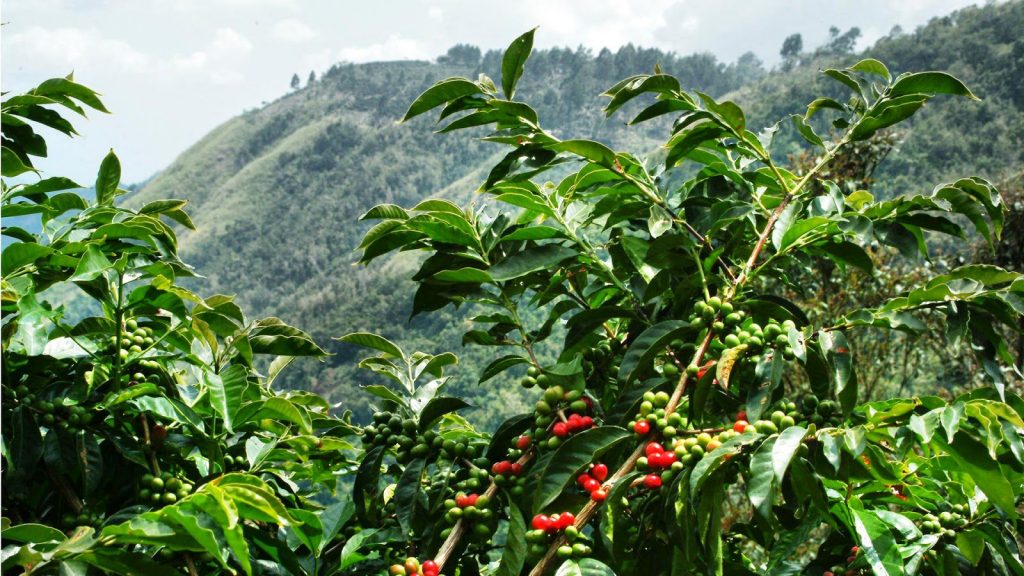
To begin, the flavor of the coffee is influenced by the region of the globe in which it is cultivated, which can be traced back to the very beginning.
The flavor of the coffee is influenced in several ways, including but not limited to the climate, elevation, temperature, and soil. The coffee produced by a coffee tree in one part of the world may not have the same flavor profile as coffee produced by the very same tree in another part of the world.
This suggests that the fact that it is cultivated in a separate location contributes, at the very least, to the fact that Vietnamese coffee has a flavor profile that is distinct from that of other types of coffee.
Reason 2: Robusta Beans
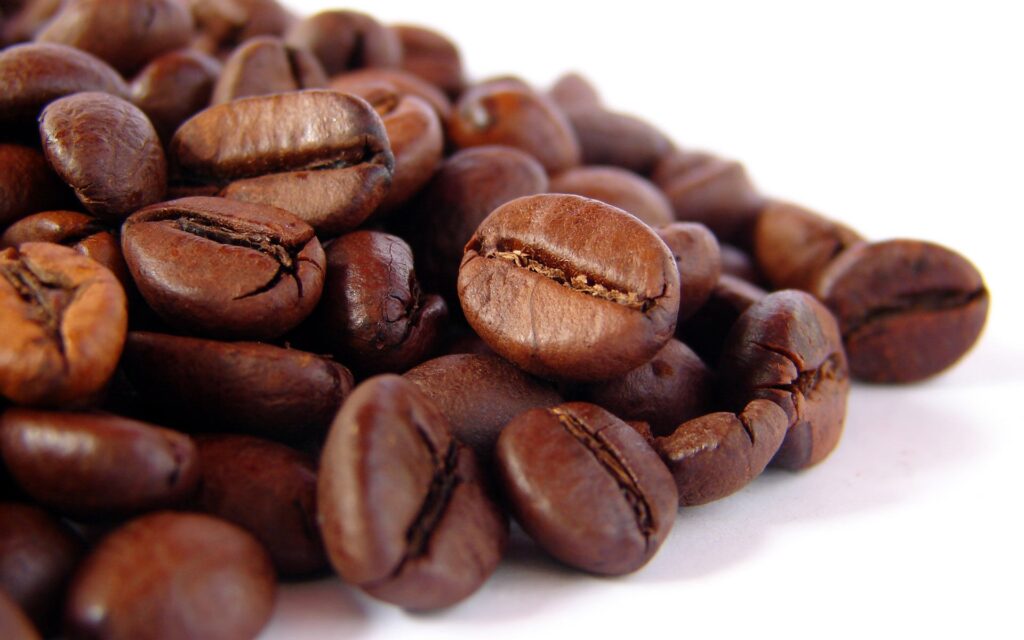
Coffee is one of Vietnam’s primary agricultural products, and the country is a major exporter of beans. The cultivar known as Robusta accounts for the great bulk of Vietnam’s coffee production. That does not imply that there is no Arabica or any of the other lesser varieties, but it does suggest that they are more uncommon.
Because of this, the bulk of Vietnamese coffee is brewed from Robusta beans, which are the least expensive and can be found in the broadest variety of locations. Robusta has a flavor profile that is quite robust and powerful, even though it is not likely to have the same richness or fruitiness that Arabica does. To put it more simply, Robusta packs more of a punch on the tongue than other types of coffee.
Robusta has fewer natural sugars and fats than Arabica does. This results in a stronger coffee that has a taste that is more reminiscent of chocolate. Additionally, they contain 2.7% caffeine, which is about twice the amount of caffeine found in Arabica beans, resulting in a more astringent flavor.
Blends may be found at the majority of coffee shops and in the bags of coffee that can be purchased there. They use a certain proportion of Robusta beans in their blend along with Arabica beans. This helps to create a more balanced taste profile. However, in Vietnam, the vast majority of coffee blends will still typically include a significant amount of Robusta since it is more cost-effective and consumers are used to the flavor.
The situation is reversed in the vast majority of other nations. Arabica beans make up the majority of the mixes, while Robusta beans make up a minor portion.
Reason 3: Brew Method

The longer brewing time required for Vietnamese coffee results in a greater amount of caffeine being extracted. The Vietnamese dripping method, which is similar to a drip coffee but does not use a paper filter, is used to make this beverage.
A metal filter, a brewing chamber, a tamper that presses the grounds down, and a lid that stores the heat are the components that make up this apparatus.
Reason 4: Grind Size
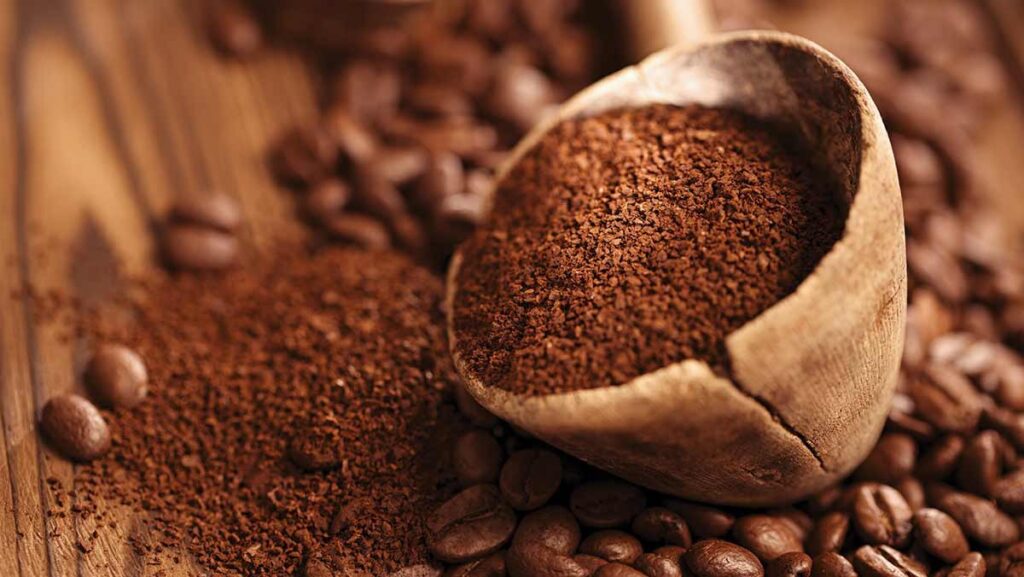
When traditionally making Vietnamese coffee, the coffee beans are normally ground quite finely. Because of the fine grind, the flow rate can be more easily controlled, and it is guaranteed that the water will not just trickle through, as this may happen with a coarse grind.
The finer the grind, the more surface area is exposed, which in turn increases the amount of caffeine that can be extracted.
Reason 5: Dark Roast

Dark roast is the traditional method of preparation for Vietnamese coffee. However, rather than utilizing greater temperatures, the coffee used in Vietnam is roasted for a much longer period.
This method helps achieve a uniform roast and avoids any breakdown or oxidation of the sugar and oil that may have occurred. The amount of caffeine that is present is unaffected, and in exchange, the coffee acquires its distinctive black color and robust taste.
Reason 6: Local Palate

Fish sauce, garlic, and a variety of fresh herbs are prominently included in Vietnamese cooking, which contributes to the cuisine’s robust taste profile. The native palate is used to taste profiles with a lot of punch.
Coffee is a staple in the daily routine of the residents of the area, serving as a stimulating pick-me-up before they go out to work. You’ll never catch them drinking it on the move; instead, they take the time to relax and savor it gently while seated.
How Much Caffeine is in Vietnamese Coffee?
We’ve noted that Robusta has a greater caffeine concentration than Arabica; let’s see how that works out in terms of a cup of coffee. Robusta coffee contains 200 milligrams of caffeine per six ounces, whereas Arabica coffee only has 130 milligrams in the same amount of coffee. The maximum amount of caffeine that should be consumed in a single day, according to the recommendations of the FDA, is 400 mg(3). This equates to no more than two cups of Vietnamese coffee.
Naturally, it is possible to make Vietnamese coffee using Arabica beans in the modern day. If you are worried about the amount of caffeine you are consuming, you should ask the barista, in the most courteous manner possible, what kind of beans they are using in their coffee.
Is Vietnamese Coffee Stronger Than Espresso?
If we’re talking about the amount of caffeine contained in a single serving, espresso is always the clear winner. Despite the fact that we don’t limit ourselves to just a single sip of coffee, do we? We use an entire cup, and there are instances when we use two. Let’s take a look at the data to obtain a better understanding of the situation.
A single serving of espresso has around 64 milligrams of caffeine. The amount of caffeine that is included in one serving of an 8-ounce cup of instant Folgers coffee is 57 milligrams.
An identical cup of Vietnamese coffee, 8 ounces in size, would have 265 milligrams of caffeine. Identical to drinking four shots of espresso!
Although Starbucks is renowned for its stronger coffee, a single 8-ounce serving of dark roast has around 190 milligrams of caffeine.
Depending on the kind of coffee you purchase, a full 8-ounce cup of black coffee will contain anywhere from 50 to 200 milligrams of caffeine. The identical cup filled with Vietnamese coffee has the highest amount of caffeine on the list, coming in at 265 mg.
It is essential to keep in mind that the amount of caffeine in a cup of coffee may vary greatly depending on the beans, roast, and preparation method used. These figures are courtesy of caffeineinformer.com in their entirety.
You can probably picture the surge of energy that would come from drinking four or five shots of espresso. It’s not hard to visualize. If you don’t plan on staying up all night, you should do yourself a favor and steer clear of drinking Vietnamese coffee in the evening.
Final Words: Is Vietnamese Coffee Strong?
Coffee connoisseurs who drink a lot of coffee are likely familiar with the robustness and significance of Vietnamese coffee on a global scale. You shouldn’t dismiss this coffee just because you’ve heard tales of other people passing out after drinking only a taste of it. Experience the robust, rich flavor, get a significant amount of antioxidants, and see the one-of-a-kind way of brewing.Is Vietnamese coffee strong? Certainly, but you’ll have no trouble enjoying some of the variants if you want to.

